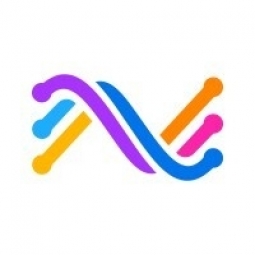SymphonyAI

Overview
|
HQ Location
United States
|
Year Founded
2017
|
Company Type
Private
|
Revenue
$100m-1b
|
|
Employees
1,001 - 10,000
|
Website
|
Twitter Handle
|
Company Description
SymphonyAI is transforming the world's largest industries with packaged AI SaaS. SymphonyAI predictive and Generative AI applications supercharge growth and productivity for businesses across retail, CPG, financial services, industrial manufacturing, media, and enterprise IT.
SymphonyAI has rapidly grown from a startup in 2017 to a leading enterprise AI company with over 3,000 talented leaders and data scientists solving the world's most challenging business problems.

Supplier missing?
Start adding your own!
Register with your work email and create a new supplier profile for your business.
Case Studies.
Case Study
Pfizer Puurs' Pilot Project with Proceedix on Glass for Line Clearance
Pfizer Puurs was facing challenges in improving workflow efficiency and standardization in their line clearance operations. The traditional methods were not providing line operators with the necessary information at the right time, which was affecting the overall efficiency of the operations. Additionally, the operators had to use their hands to access the information, which was not ideal during inspections. The varying levels of experience among operators also posed a challenge in terms of training and information accessibility. Furthermore, Pfizer Puurs was looking for a solution for remote monitoring and line clearance activities.
Case Study
Operational Excellence through Digital Transformation: A Case Study on FrieslandCampina
FrieslandCampina, a renowned dairy company, was facing operational challenges in its packaging department. The department, which operates in three shifts, required constant monitoring of a range of parameters on the packaging machines to ensure optimal functioning. Additionally, with each new production run, a new parameter list had to be completed. Until recently, these values were manually recorded on paper lists and stored, which was a time-consuming and inefficient process. The shift leader had to spend a significant amount of time filing these paper lists, and referring back to the values for a specific machine on a specific day was a cumbersome task. The paper-based process was not only inefficient but also prone to errors and lacked real-time accessibility.
Case Study
Digital Transformation in Metalworking: A Case Study on Metafor's Adoption of IoT
Metafor, a metalworking subcontractor with a wide range of products, faced a significant challenge in configuring robots for each new product on the factory floor. The process was time-consuming and required extensive coordination between operators and the welding manager. The use of paper-based work instructions often led to misunderstandings or were ignored altogether, causing inefficiencies and potential errors in the production process.
Case Study
Proactive and Mobile Maintenance: A Leap Towards Industry 4.0 for Philips Lighting
Philips Lighting (now Signify), a global leader in lighting solutions, aimed to become the world's only conventional lighting manufacturing plant network. However, its operations in Turnhout, Belgium, a high-wage country, needed to be as efficient as possible to realize this ambition and embrace the Industry 4.0 evolution. The company had already implemented Lean manufacturing, with employees constantly seeking ways to eliminate waste and improve processes. However, the old PDA used for monitoring and carrying out preventative maintenance tasks on up to 200 machines was slow, unwieldy, and difficult to manage. It was not adaptable to include new items or delete obsolete ones, could only record current measurements, and offered no historical data. The PDA was inadequate for the task at hand.





